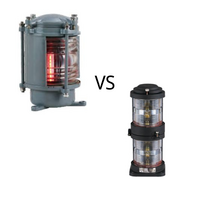Categories
Tags
-
#LED Submarine Navigation Lights
#Stealth Major Light
#LED Marine Cabin Lights
#LED Marine Navigation Signal Lights,Marine Spotlights,Marine Searchlight,
#Explosion-proof fire Emergency Lights
#LED Marine Navigation Signal Lights
#Explosion-proof Fluorescent Pendant Lights
#Marine Reading Lights
#Marine Navigation Lights
#LED Light
#LED Marine Lights
#Marine LED Lights
#Marine Searchlight Bulb
#Marine Searchlights
#Explosion Proof Lighting
#LED explosion proof lighting
#Marine Waterproof Switch and Sockets
#Boat Cabin Lighting
#Marine Spotlights
#Marine Floodlights
#marine cabin lighting
#LED Soft Light Strips
#Marine Navigational Lights
#f Marine Searchlights
#Morse Code Signal Light
#Ship Stern Lights
#Ship Cabin Lighting Fixtures
#LED Marine searchlights
#Explosion Proof Lights
#marine Explosion Proof Lights
#Explosion-proof lights
#Navigation Lights
#Marine Lighting
#CCS Certification
#LED Explosion Proof Flood Lights
#Installing Marine Searchlights
#Marine Explosion-Proof Light
#marine searchlight
#LED marine searchlight
#High-Power Marine Searchlights
#Yushuo
#Marine Light
Archives
Single - Deck Navigation Lights vs. Double - Deck Navigation Li
-
In the realm of navigation, when night falls and visibility diminishes, navigation lights serve as guiding stars. They offer crucial direction for vessels, aircraft, and other modes of transport. Amidst the array of navigation light options, single - deck and double - deck navigation lights each possess distinct characteristics. Their differences go beyond mere structure and extend to performance and applications. This article explores two types of navigation lights. Its aim is to assist readers in making informed decisions about night-time illumination choices.
Structural Differences Between Single - Deck and Double - Deck Navigation Lights
Single - layer navigation lights feature a relatively simple construction, typically consisting of a single lamp head and bulb. They come in various housing materials, such as plastic and metal. This straightforward design makes single - layer navigation lights lightweight and compact, facilitating easy installation and maintenance. However, with only one light source, their reliability may fall short in complex navigation scenarios.
In contrast, double - layer navigation lights are more intricate. Equipped with two lamp heads, they can accommodate two bulbs. This dual - layer design enhances the lamp's redundancy, ensuring continuous illumination even if one bulb malfunctions. Regarding power supply, double - layer navigation lights usually employ dual - circuit power. One circuit connects to the main power source, while the other links to an emergency power source. This setup guarantees that the navigation light remains powered even if the main power fails. Additionally, in terms of optical performance, double - layer navigation lights hold a significant edge. With two bulbs, they boast higher light intensity and longer visibility ranges. For instance, the visibility of double - layer mast lights can reach up to 6 nautical miles, compared to single - layer navigation lights, which generally have a shorter visibility range of 3 - 5 nautical miles.
Precise Application Scenarios
In the maritime domain, small vessels like yachts and fishing boats often operate in near - shore or inland waters. They have relatively short navigation ranges. As their requirements for light redundancy and long - distance identification are not as stringent, single - layer navigation lights, with their lightweight and economical features, emerge as the ideal choice. They suffice to meet the basic illumination needs for night - time navigation, offering essential guidance to crew members.
On the other hand, large vessels such as cargo ships and passenger ships undertake long-distance voyages. They navigate through complex maritime environments. Double-deck navigation lights have high reliability, high light intensity, and long-range identification capabilities. These features are vital for ensuring maritime safety. They guarantee that the vessel's light signals remain clearly visible even in adverse weather or complex sea areas. This ensures that vessel's position and status information is transmitted to other ships and shore-based facilities in a timely manner. It reduces the risk of potential collisions.
In the aviation sector, single - layer navigation lights can meet the basic requirements for indicating the position and direction of small or light aircraft during short - distance flights. However, large passenger or transport aircraft, which operate in busy airspace and complex weather conditions, rely heavily on the strong and reliable light signals provided by double - layer navigation lights. These lights facilitate effective communication with other aircraft and ground control towers, ensuring flight safety.
Conclusion
In summary, single - layer and double - layer navigation lights each have their own strengths in terms of structure, performance, and application scenarios. When selecting navigation lights, users should take into account their specific needs, navigation environments, and budgets. Single - deck navigation lights, with their simplicity and cost - effectiveness, are suitable for small vessels or aircraft undertaking short - distance navigation. They provide the basic illumination required for such operations. Conversely, for large vessels or aircraft embarking on long - distance voyages in complex environments, double - layer navigation lights are the superior choice. Their high reliability, high light intensity, and long - range identification capabilities offer enhanced safety and reliability. Regardless of the type chosen, navigation lights play an indispensable role in night - time journeys. They illuminate the path for navigators and safeguard the hope of every safe arrival.

